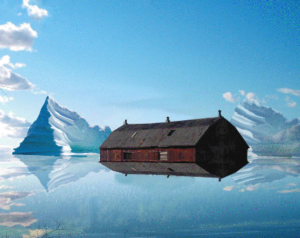Visitors of the Save the Arctic homepage are greeted by endearing photographs of polar bears juxtaposed with shadowy images of Arctic oil rigs encroaching on the bears’ natural habitat. Displayed above in bold script, the rationale for Save the Arctic is clear: “The melting Arctic is under threat from oil drilling, industrial fishing and conflict. You can Save The Arctic.”
Greenpeace International launched the Save the Arctic campaign last month in response to the decrease in permanent ice cover, exacerbated by pollution from increased oil drilling in the Arctic. Organizers aim to obtain 1 million online signatures in support of a ban on oil drilling in the Arctic, in turn creating a global sanctuary for its inhabitants.
With 506,596 signatures as of 11:35 AM EST, July 6, 2012, organizers have already surpassed the halfway mark to achieving their goal. As people from Mexico to Turkey to countries in between sign the petition every few seconds, without signs of slowing down, reaching the objective 1 million signatures seems promising.
So how did Save the Arctic manage to mobilise so much online support in so little time?
While it is too early to evaluate precisely which methods will work best for the campaign overall and why, it is evident that a combination of social media and multimedia has been integral to galvanizing support. Facebook and Twitter presence spreads word of the campaign to a wide, global audience.
Furthermore, one of the most notable tactics is a short video narrated by actor Jude Law and accompanied by Radiohead music. The video follows a homeless polar bear scouring the streets of London for food and attention, to no avail. The video ends with a shot of the polar bear collapsing against a tree next to a pile of garbage, followed by a link to the Save the Arctic website. Pulling on the heartstrings and drawing on celebrity support, the video already has over 200,000 views on YouTube and is helping to bring in signatories worldwide.
So what lies in the future for Save the Arctic? Only time will tell to what extent the Save the Arctic petition will affect natural resource extraction in the Arctic. However, if completed, the petition could serve as a significant stepping stone to sustainable development in the Arctic. At the very least, the campaign’s diverse and vigorous online mobilisation efforts are starting a dialogue on a critical environmental issue among thousands of people worldwide.
If you are interested in learning more about Save the Arctic or signing the petition, visit the Save the Arctic website.
Categories:
narrative, framing and storytelling



